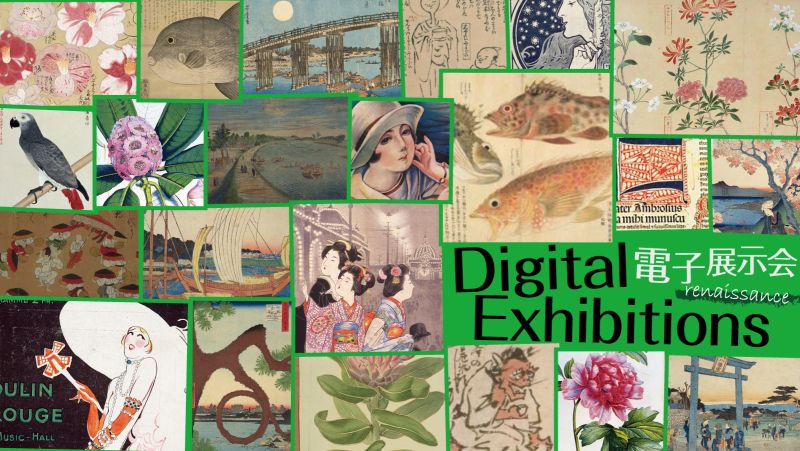
Gardening in the Edo period
Fauna and Flora in Illustrations: Natural History of the Edo era
During the Edo period, the horticulture of Japan was unparalleled in the world. One of its main features was the preference for unusual plants such as those with spots, dwarfism, and heteromorphy.
At the end of the Edo period, Robert Fortune, an Englishman who visited Edo, was astonished by many unusual plants that he had never seen in his home country. He praised the Japanese art of horticulture, stating "They have in cultivation, in a variegated state, almost all of the ornamental plants of the country, and many of these are strikingly handsome." (1)
It was not until the Kansei period (1789-1800) that strange and unusual plants became particularly popular. Desired plants were variants of Ardisia crispa DC., Japanese rohdea, whisk fern, dendrobium moniliforme, or Anodendron affine (Hook. et Arn.) Druce.
To the modern eye, they may seem rather plain and unremarkable. However, at the time, they were so popular that they were called "golden trees," and a single plant could be priced at tens or hundreds of millions of yen.
In particular, the whisk fern, known as a "living fossil", is one of the rarest among these strange plants. It is a kind of fern that has no roots or leaves, which makes it very odd.
It is not clear why such an unusual plant attracted so many people, but in Shoran Fu, whisk ferns are planted in very fine pots, which shows how they were prized by the people of that time.
Soumoku Kihin Kagami and Soumoku Kinyo Shu are the great compilations published in this era. They illustrate rare plants with variegated foliage or unusual leaf shapes. The author of the latter, MIZUNO Tadatoshi, a hatamoto (samurai retainer), seems to have been particularly fond of Japanese rhodea.
His work, Ko Omoto Nayose depicts proudly grown Japanese rhodea that were carefully nurtured by Tadatoshi and other enthusiasts of Edo. The many pots lined up in a variety of designs give a sense of bustling exhibition.
It was actually the second and third sons of the hatamoto who played a leading role in creating this fever for strange plants. They were not heirs to their families, were not able to be posted as official retainers, and were ashamed.
They had a lot of time on their hands, and also enjoyed a certain level of education. Gardening was just the right thing for them as a noble hobby to earn a little extra money.
Not a few of the unusual plants created in that era have become obsolete, and some of the techniques of pruning and dividing the plants were more advanced than today.
Edo gardeners' passion for collecting and cultivating curiosities unwittingly led them to the top of the world's gardening scene. Thinking of the gardeners who wrote down these illustrated books, they may seem more attractive and meaningful.

